Don't wanna be here? Send us removal request.
Text
Finding the Right Eye Clinic Near to You: What You Need to Know
When searching for an eye clinic near to you, it’s essential to consider more than just convenience. Your vision is one of your most vital senses, and choosing a reputable clinic ensures you receive the care your eyes deserve.
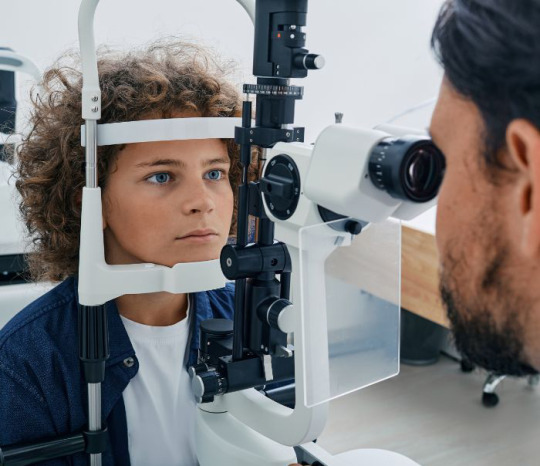
Why Routine Eye Checkups Matter
Regular eye exams aren’t only for people with poor vision. Even if your sight seems fine, annual checkups can detect issues like glaucoma, macular degeneration, cataracts, or early signs of diabetes. A qualified eye doctor will use specialized equipment to assess your vision and the overall health of your eyes.
What Services to Expect
A reliable eye clinic near to you should offer comprehensive services such as:
Routine vision exams
Prescription updates for glasses and contact lenses
Pediatric eye care
Dry eye evaluation and treatment
Diagnosis and management of eye diseases
Pre- and post-operative care for LASIK or cataract surgery
How to Evaluate the Right Clinic
Here are some things to check:
Credentials: Ensure the clinic is staffed with board-certified optometrists or ophthalmologists.
Technology: Clinics that use the latest diagnostic tools can offer more accurate results.
Patient Reviews: Honest reviews give you insight into staff behavior, wait times, and patient satisfaction.
Accessibility: Is the clinic close to public transport or does it offer parking?
Insurance and Cost Transparency: Good clinics clearly communicate pricing and insurance coverage.
Choosing Between Optometrist and Ophthalmologist
An optometrist can help with prescriptions and basic eye conditions. An ophthalmologist, on the other hand, is a medical doctor who can perform surgeries and manage complex eye diseases. Some clinics offer both for all-around care.
Eye Health Tips While You Search
Rest your eyes during screen time
Wear sunglasses with UV protection
Eat a diet rich in leafy greens and omega-3 fatty acids
Follow up on any symptoms like blurry vision or dry eyes
Conclusion
Locating the best eye clinic near to you involves research and understanding your specific needs. Whether it’s for a child’s first eye exam or ongoing treatment for an existing condition, the right clinic can protect and improve your vision for years to come. Take the time to find a facility that combines experience, modern care, and a compassionate approach.
0 notes
Text
Dry Eye Treatment: Causes, Symptoms, and Effective Solutions
If your eyes often feel irritated, gritty, or unusually dry, you're not alone. Millions of people suffer from dry eye syndrome, a common yet often underdiagnosed condition. Fortunately, with modern advancements in dry eye treatment, relief is more accessible than ever.
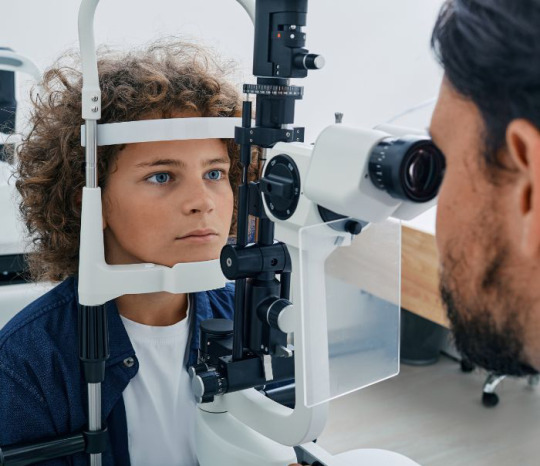
🔍 What Is Dry Eye Syndrome?
Dry eye syndrome occurs when your eyes don’t produce enough tears or when the tears evaporate too quickly. Healthy tears are essential for eye comfort, vision clarity, and protection from infection. Without them, your eyes can become dry, inflamed, and prone to damage.
❓ Common Causes of Dry Eye
Several factors can disrupt the natural tear film, including:
Aging – Tear production naturally decreases with age.
Screen time – Reduced blinking while using devices leads to evaporation.
Environmental conditions – Wind, dry air, and pollution can dry the eyes.
Hormonal changes – Common during pregnancy, menopause, or due to medications.
Medical conditions – Autoimmune diseases like Sjögren's syndrome.
Contact lens use – Prolonged wear can interfere with tear distribution.
LASIK surgery – May temporarily affect tear production.
👁️ Symptoms of Dry Eye
You might have dry eye if you experience:
Burning, stinging, or scratchy sensations
Redness or watery eyes (yes, excessive tears can be a sign)
Blurry vision that improves with blinking
Sensitivity to light
Eye fatigue or discomfort while reading or using screens
If these symptoms persist, it's important to seek professional care for diagnosis and treatment.
💡 Effective Dry Eye Treatment Options
The right dry eye treatment depends on the severity and cause. Here’s an overview of today’s most effective options:
1. Artificial Tears & Lubricating Drops
Over-the-counter lubricants provide temporary relief.
Preservative-free versions are better for frequent use.
2. Prescription Eye Drops
Cyclosporine (Restasis) and Lifitegrast (Xiidra) reduce inflammation and help your eyes produce more tears.
3. Warm Compress & Eyelid Hygiene
Helps unclog meibomian glands, which produce the oily layer of your tears.
Often paired with gentle eyelid cleansers.
4. Punctal Plugs
Tiny devices inserted into tear ducts to slow tear drainage.
Keeps tears on the eye longer, reducing dryness.
5. Nutritional Support
Omega-3 supplements (fish oil or flaxseed) may reduce inflammation and improve tear quality.
6. Intense Pulsed Light (IPL) Therapy
A non-invasive treatment that targets inflammation in the eyelids.
Particularly effective for meibomian gland dysfunction (MGD), a common cause of dry eye.
7. LipiFlow Thermal Pulsation
Combines heat and gentle pressure to unblock meibomian glands.
Often used when other treatments don’t provide enough relief.
🏥 Why Professional Diagnosis Matters
Self-treating dry eye with drugstore drops may help briefly, but long-term relief usually requires a customized treatment plan. A comprehensive eye exam can:
Determine if your dry eye is evaporative or aqueous-deficient
Evaluate meibomian gland function
Rule out more serious underlying conditions
At clinics like RMU Eye Institute, advanced diagnostic tools allow doctors to tailor treatment precisely to your condition.
🧭 When to See a Dry Eye Specialist
If you’ve been relying on artificial tears more than a few times a day or experiencing chronic discomfort, it’s time to consult a specialist. Early treatment can prevent long-term damage to the eyes and restore comfort to your daily life.
✅ Take the First Step Toward Relief
Dry eye can be frustrating, but it's also very treatable. Whether your symptoms are mild or severe, a personalized dry eye treatment plan can significantly improve your quality of life.
If you're in Utah or nearby, consider visiting the experts at RMU Eye Institute to learn about your options and get started on the path to relief.
0 notes
Text
👁️ Discover the Best Dry Eye Treatment for Lasting Relief! 💧
Tired of burning, itchy, or watery eyes? 😣 Dry eye syndrome is more common than you think — but it’s also treatable! From soothing artificial tears to advanced in-office procedures like LipiFlow and IPL, there’s a solution tailored for your eyes.
✅ Relieve discomfort ✅ Protect your vision ✅ Feel refreshed daily
Book a professional dry eye treatment near you and give your eyes the care they deserve!
0 notes
Text
IPL Therapy for Dry Eye: A Revolutionary Treatment for Lasting Relief
Dry eye syndrome is a common condition affecting millions worldwide, causing discomfort, irritation, and vision problems. If you suffer from dry eye, you know how frustrating and persistent it can be. Fortunately, modern treatments like IPL therapy (Intense Pulsed Light therapy) are changing the game by offering effective, lasting relief.
In this article, we’ll cover:
What dry eye syndrome is
How IPL therapy works for dry eyes
Benefits of IPL therapy compared to traditional treatments
Who is a good candidate for IPL therapy
What to expect during and after IPL treatment
Tips for managing dry eye symptoms
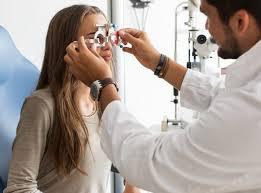
What Is Dry Eye Syndrome?
Dry eye syndrome occurs when your eyes don’t produce enough tears or when the tears evaporate too quickly. This leads to inflammation and irritation of the eye surface. Common symptoms include:
Burning or stinging sensations
Redness and irritation
Gritty or sandy feeling in the eyes
Blurred vision
Sensitivity to light
Dry eye can result from many causes such as aging, prolonged screen time, environmental factors, certain medications, or medical conditions like meibomian gland dysfunction (MGD).
What Is IPL Therapy for Dry Eye?
IPL therapy, originally used in dermatology to treat skin conditions, is now FDA-approved for managing dry eye caused by meibomian gland dysfunction. IPL uses controlled pulses of broad-spectrum light applied around the eyelids and cheeks.
How IPL works:
The light heats and melts hardened oils blocking the meibomian glands
Stimulates the glands to produce healthier oils, improving tear quality
Reduces inflammation and abnormal blood vessels contributing to dry eye
Destroys bacteria and abnormal blood vessels that worsen symptoms
This non-invasive procedure helps restore the natural tear film, relieving dryness and irritation.
Benefits of IPL Therapy for Dry Eye
Compared to traditional dry eye treatments like artificial tears or warm compresses, IPL offers several advantages:
1. Long-Lasting Relief
IPL addresses the root cause of evaporative dry eye by improving gland function, often resulting in months of symptom relief.
2. Non-Invasive and Safe
The procedure is quick, painless, and performed in-office without surgery or downtime.
3. Improves Tear Quality
Unlike lubricating drops that only add moisture, IPL enhances the lipid layer of tears, reducing evaporation.
4. Reduces Inflammation
IPL’s light energy targets inflammatory cells and abnormal blood vessels around the eyelids.
5. Suitable for Many Patients
IPL works for various dry eye causes, especially meibomian gland dysfunction, and can be combined with other treatments.
Who Is a Good Candidate for IPL Therapy?
IPL therapy is ideal for people who:
Have moderate to severe dry eye symptoms
Suffer from meibomian gland dysfunction (MGD)
Have persistent symptoms despite using artificial tears or other treatments
Are looking for a non-surgical solution
However, IPL is not recommended for:
Pregnant women
People with certain skin conditions or very dark skin tones (due to risk of pigmentation changes)
Those with active eye infections or inflammatory diseases
A thorough eye exam by a qualified ophthalmologist or optometrist can determine if IPL therapy is right for you.
What to Expect During IPL Treatment
The procedure typically takes 15-30 minutes.
A protective shield is placed over your eyes.
Pulses of light are applied to your lower eyelids and cheeks.
Most patients feel a mild warming or snapping sensation but no pain.
Multiple sessions (usually 3-4) spaced 3-4 weeks apart are recommended for best results.
After IPL Therapy: Recovery and Results
You can resume normal activities immediately.
Some patients may notice mild redness or swelling that resolves quickly.
Improvement in symptoms often begins after the first session and continues with additional treatments.
Regular follow-up with your eye doctor helps monitor progress and maintain results.
Tips for Managing Dry Eye Alongside IPL
Follow your doctor’s recommendations for eye hygiene and maintenance.
Use preservative-free artificial tears as needed.
Take regular breaks during screen use (20-20-20 rule: every 20 minutes, look 20 feet away for 20 seconds).
Avoid dry or windy environments when possible.
Stay hydrated and maintain a healthy diet rich in omega-3 fatty acids.
Final Thoughts
IPL therapy for dry eye is a breakthrough treatment offering hope for those struggling with chronic dry eye symptoms. By improving the function of your meibomian glands and reducing inflammation, IPL can restore comfort and clear vision.
If you’re tired of relying on drops and temporary fixes, consult your eye care professional to see if IPL therapy is right for you. Say goodbye to dry eyes and hello to lasting relief!
0 notes
Text
Dry Eye Prescription Treatments: What Works and When You Need One
Explore top dry eye prescription options like Restasis, Xiidra, and more. Learn when you need a prescription and what treatment works best for chronic dry eye.
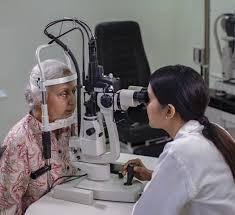
👁️ Understanding Dry Eye Syndrome
Dry eye syndrome (DES) occurs when your eyes can’t produce enough tears or quality tears to stay lubricated. While mild cases may be treated with over-the-counter drops, persistent or severe symptoms often require a dry eye prescription for more effective, long-term relief.
🧪 When Do You Need a Dry Eye Prescription?
You should consider prescription treatment if:
Your eyes remain dry despite regular use of artificial tears
You experience chronic redness, irritation, or blurred vision
Your optometrist diagnoses you with moderate to severe dry eye
You have underlying inflammation or autoimmune disorders
💊 Top Prescription Treatments for Dry Eye
1. Restasis (Cyclosporine Ophthalmic Emulsion)
How it works: Reduces inflammation in tear-producing glands.
Use: Twice daily in each eye.
Results: Improvement in natural tear production over 1–3 months.
Best for: Inflammatory dry eye, especially due to autoimmune issues.
2. Xiidra (Lifitegrast Ophthalmic Solution)
How it works: Targets inflammation at the surface of the eye and tear ducts.
Use: Twice daily in each eye.
Results: Relief often seen in 2–6 weeks.
Best for: Patients with irritation, redness, and inflammation from dry eye.
3. Corticosteroid Eye Drops (e.g., Lotemax, FML)
How it works: Short-term use to reduce inflammation rapidly.
Use: Prescribed for flare-ups or post-surgery dryness.
Caution: Long-term use can raise eye pressure and risk cataracts.
Best for: Acute or severe dry eye flare-ups.
4. Tyrvaya (Varenicline Nasal Spray)
How it works: Stimulates tear production through nasal pathways.
Use: One spray per nostril, twice daily.
Best for: Patients unresponsive to eye drops or needing non-drop solutions.
👓 Supporting Prescription Therapies
Prescription treatments often work best when combined with:
Omega-3 supplements
Warm compresses
Lid hygiene (wipes or foams)
Environmental modifications (humidifiers, reducing screen time)
🏥 How to Get a Dry Eye Prescription
You’ll need a comprehensive eye exam from an optometrist or ophthalmologist. They may perform:
Tear breakup time (TBUT)
Schirmer’s test
Ocular surface staining
Meibomian gland evaluation
Based on the results, they’ll recommend the best prescription treatment suited to your specific type of dry eye.
📍 Where to Find Help
Looking for personalized dry eye treatment? Clinics like Hoopes Vision or the RMU Eye Institute in Utah specialize in diagnosing and managing dry eye with prescription therapies and in-office treatments.
Final Thoughts
If over-the-counter remedies haven’t worked, it may be time to consider a dry eye prescription. These treatments can restore tear production, reduce inflammation, and significantly improve your quality of life.
0 notes
Text
Dry Eye Medications: Types, Uses, and How They Help
Dry Eye Syndrome (DES) is often chronic, and while lifestyle changes and over-the-counter products can help, medications are often necessary—especially for moderate to severe cases. The right medication can reduce inflammation, stimulate tear production, and improve tear quality.
🔹 1. Anti-Inflammatory Prescription Eye Drops
🧴 Restasis® (Cyclosporine A 0.05%)
What it does: Increases tear production by reducing inflammation in the tear glands.
Use: Twice daily; results may take 3–6 months.
Common side effects: Burning or stinging upon instillation.
🧴 Xiidra® (Lifitegrast 5%)
What it does: Targets and blocks a specific protein involved in eye surface inflammation.
Use: Twice daily; some patients notice relief in a few weeks.
Side effects: Unusual taste, irritation, blurry vision after use.
🧴 Eysuvis® (Loteprednol etabonate 0.25%)
What it does: A corticosteroid for short-term relief of dry eye flares.
Use: Typically used for a few weeks at a time.
Warning: Long-term use of steroids can increase the risk of glaucoma or cataracts.
🔹 2. Over-the-Counter Artificial Tears and Lubricants
Brands include Systane®, Refresh®, Blink®, TheraTears®, and Optive®.
Preservative-free drops are best for frequent use.
Gel drops and ointments are available for nighttime relief.
Note: While not medicated, these are essential first-line treatments and may be used alongside prescription medications.
🔹 3. Oral Medications
💊 Omega-3 Fatty Acids
Found in fish oil and flaxseed oil supplements.
Help improve the quality of meibomian gland secretions (oil layer of the tear film).
💊 Tetracycline Antibiotics (Low-Dose)
Doxycycline or Minocycline
Used in low doses to reduce eyelid inflammation and improve meibomian gland function.
Often used for rosacea-related dry eye.
🔹 4. Serum Eye Drops
Autologous Serum Drops are made from a patient’s own blood serum and diluted with saline.
Rich in growth factors and nutrients not found in artificial tears.
Used in severe or non-responsive dry eye, especially in autoimmune conditions.
🔹 5. Cholinergic Agonists
💊 Pilocarpine (Salagen) and Cevimeline (Evoxac)
Oral medications that stimulate tear and saliva production.
Often prescribed for Sjögren’s syndrome.
Side effects: sweating, nausea, flushing, increased urination.
🔹 6. Other Adjunctive Therapies (Topical or Systemic)
Topical azithromycin: May help improve meibomian gland function.
Tacrolimus ointment (off-label): Occasionally used for inflammatory eyelid diseases in resistant cases.
When Are Medications Recommended?
You might need prescription dry eye medication if:
OTC drops are not enough
You have chronic inflammation
You have systemic autoimmune diseases
Your doctor detects meibomian gland dysfunction (MGD)
Your eye surface is damaged (e.g. keratitis or corneal erosions)
Conclusion
Medication for dry eye is not one-size-fits-all. Your eye care provider will choose a treatment based on the type and severity of your dry eye, your general health, and your lifestyle.
For many patients, a combination approach—using artificial tears, anti-inflammatory drops, and oral supplements—offers the best results.
0 notes
Text
👁️ Eye Exam Near You in Provo, Utah: What to Expect and Where to Go
If you're searching for an eye exam near you in Provo, Utah, you're taking an important step toward maintaining your vision and overall health. Regular eye exams are not just about updating your glasses prescription ��� they can detect early signs of eye diseases, monitor changes in your vision, and even catch symptoms of broader health issues like diabetes or high blood pressure.
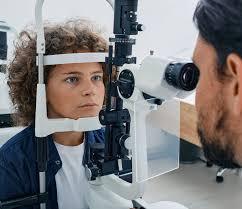
👓 Why Regular Eye Exams Matter
Even if you feel your vision is fine, eye exams are a proactive way to protect your long-term eye health. In Provo — where screen time is high among students, remote workers, and families — issues like digital eye strain, dry eye, and undiagnosed vision problems are increasingly common.
Benefits of regular eye exams:
Detect and correct refractive errors (nearsightedness, farsightedness, astigmatism)
Monitor eye health for diseases like glaucoma, macular degeneration, or cataracts
Update prescriptions for glasses or contact lenses
Identify signs of systemic conditions such as diabetes or high blood pressure
🩺 What Happens During an Eye Exam?
When you visit a local Provo optometrist, here’s what a typical eye exam may include:
Patient History – You’ll discuss any vision problems, health issues, medications, and family history.
Visual Acuity Test – Reading from an eye chart to measure how clearly you can see.
Refraction Test – Determines your exact prescription for glasses or contacts.
Eye Pressure Test – Checks for glaucoma using a puff of air or gentle pressure.
Retinal & Slit-Lamp Exam – Examines the back of your eye, optic nerve, and retina.
Eye Muscle Function Tests – Evaluates eye movement, alignment, and coordination.
Most exams take about 30–45 minutes and are completely painless.
📍 Where to Get an Eye Exam Near You in Provo, Utah
There are several trusted eye care providers in and around Provo offering comprehensive exams for all ages — from children to seniors. Here are a few local options:
1. Utah Valley Eye Center
Full-service exams and medical eye care
Accepts major insurance plans
2. America’s Best Contacts & Eyeglasses – Orem
Affordable eye exam packages
Offers 2-pairs-and-eye-exam promotions
3. Eyemart Express – Provo
Walk-in exams available
Fast, same-day glasses service
4. University Optometry Clinics (BYU-affiliated)
Discounted care for students and the public
Access to new technology and screenings
Tip: Always check if your provider accepts your vision insurance (VSP, EyeMed, etc.), and ask about HSA/FSA eligibility.
💰 How Much Does an Eye Exam Cost in Provo?
With insurance: Typically $10–$40 co-pay
Without insurance: Ranges from $60 to $120, depending on the clinic and any additional testing
Many clinics in Provo offer promotions or discounted rates for new patients, families, and students.
👨👩👧 When Should You Get an Eye Exam?
Children: First exam at age 6–12 months, then every 1–2 years
Adults (18–60): Every 1–2 years
Seniors (60+): Every year, or more frequently if recommended
If you’re experiencing symptoms like blurred vision, eye strain, headaches, or difficulty seeing at night, don’t wait — schedule an eye exam as soon as possible.
✅ Conclusion: Prioritize Your Vision Today
Whether you're a student at BYU, a busy professional, or a parent in Provo, regular eye exams are key to staying ahead of vision issues and supporting your long-term health. With trusted optometrists across Provo offering convenient appointments and affordable care, finding an eye exam near you has never been easier.
📞 Need Help Finding the Right Clinic?
If you’re unsure where to start, check Google reviews or ask your general doctor for a referral to a local optometrist in Provo.
1 note
·
View note